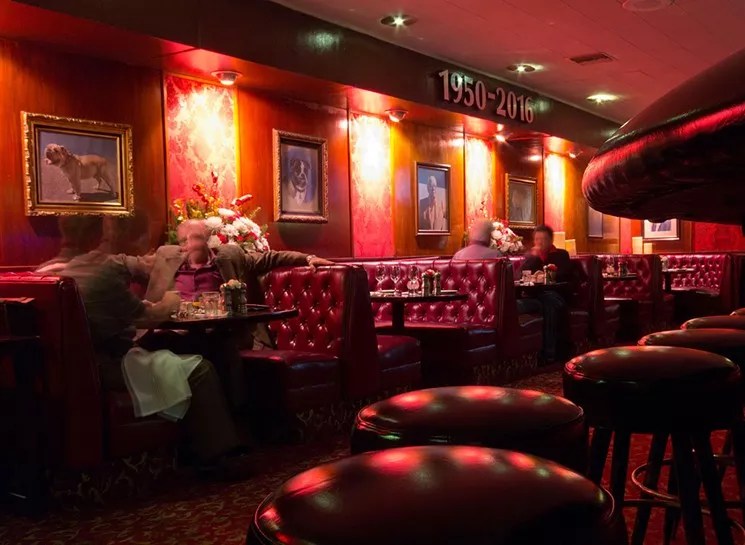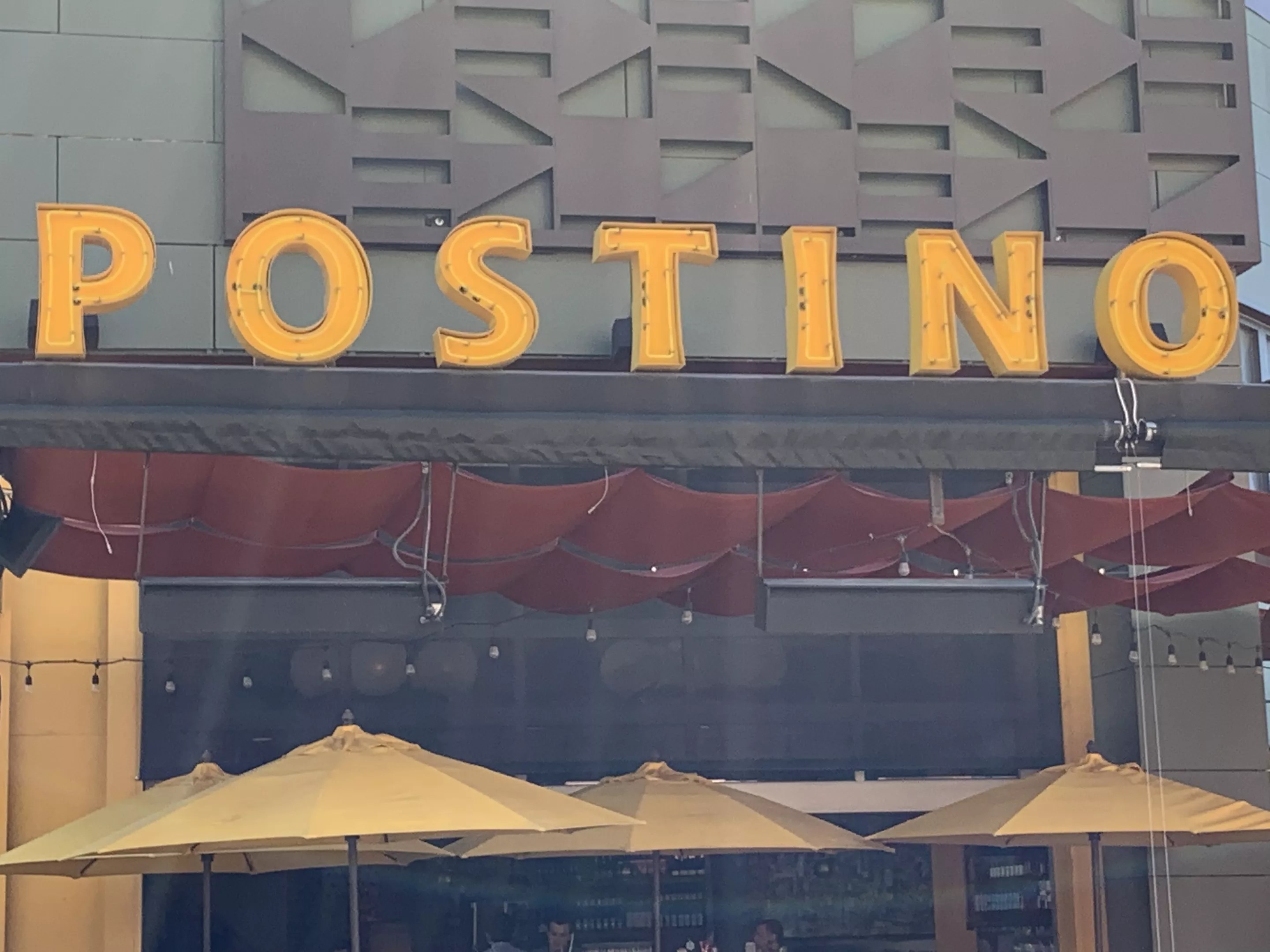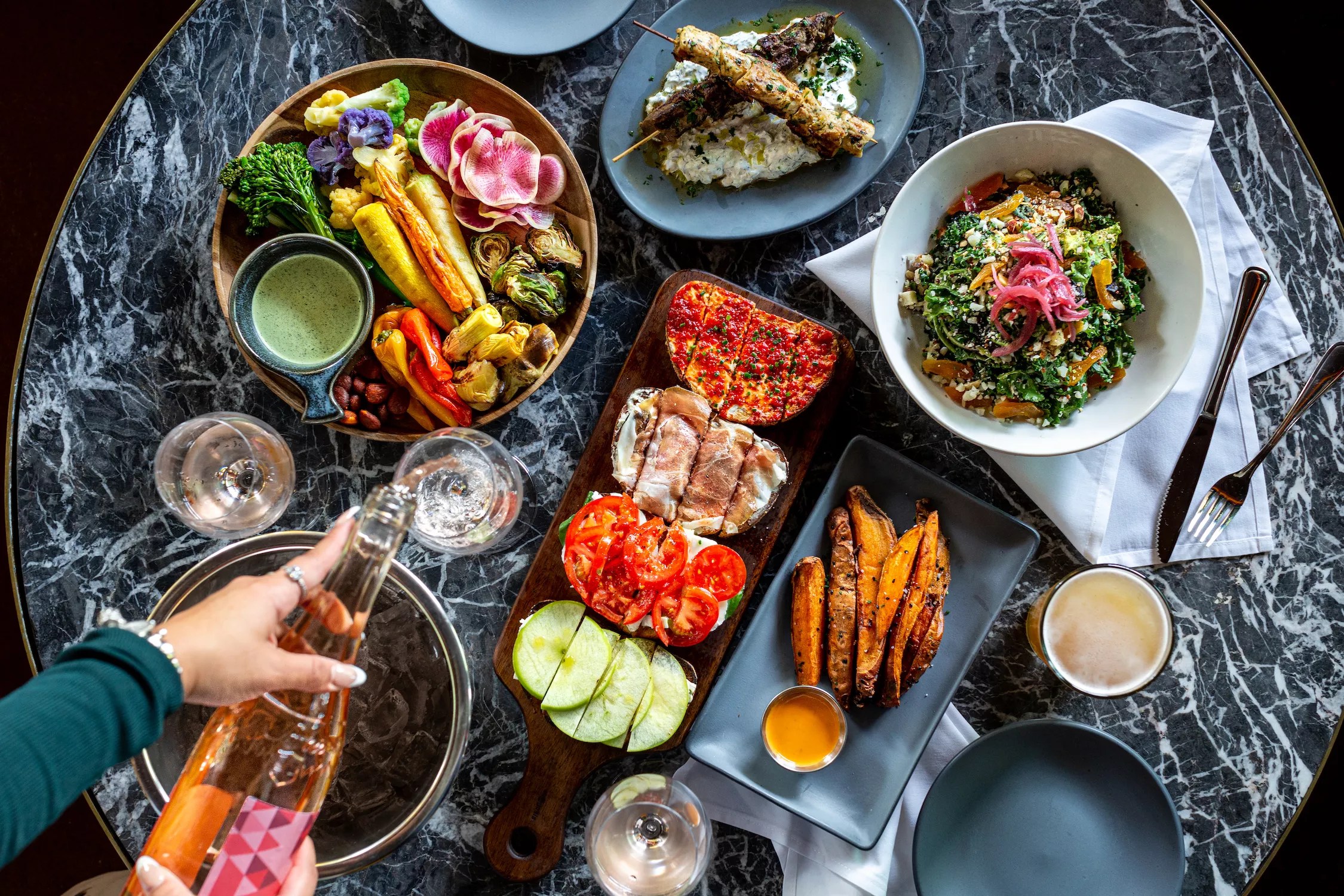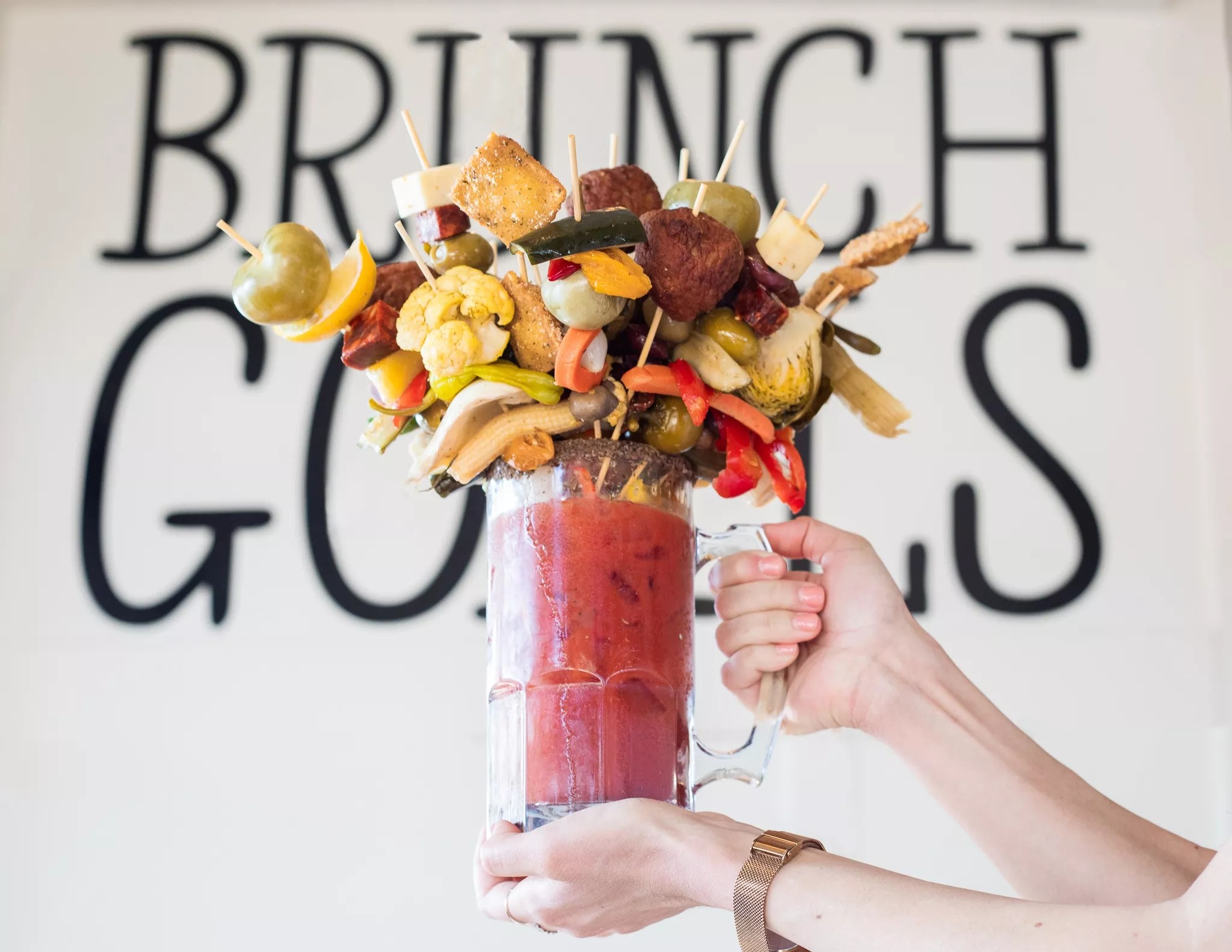
Mark Andresen

Audio By Carbonatix
Editor’s note: This story was updated on February 2 to reflect the correct spelling of Roe.
Katie Roe and her husband purchased their home near Happy Valley Road and 67th Avenue in Peoria 17 years ago so they could be close to their insurance company jobs.
But when it came to the independent restaurant scene they craved, the couple wasn’t close to much. The Roes had moved from Cleveland, where they were accustomed to an array of non-corporate food options. They weren’t looking for fine dining and preferred a laid-back vibe, but still, it took a 30- or 40-minute drive east to find satiation.
Postino and Fox Restaurant Concepts, which includes Culinary Dropout, Wildflower, Zinburger, and Blanco, were among their top go-to eateries. Elements at Sanctuary and La Hacienda at the Fairmont Scottsdale Princess were their special occasion restaurants. None of those are west of Interstate 17.
“It was kind of a culture shock, to be honest. All the big boxes and chains,” Roe says. “I should not have to drive 40 minutes on a Tuesday for a glass of wine and bruschetta.”
For Amy Malloy, whose family has lived in Glendale for three generations, this was simply part of life in the West Valley. Growing up, the favorite haunts of Malloy and her friends were 15 to 20 minutes away. None were headquartered locally, either.
“Sadly, we went to Bennigan’s a lot in Metro Center,” Malloy says with a laugh. “There was TGI Fridays on Bell Road after Friday night football games. I remember when Fazoli’s first came in. We could get Italian food in a drive-thru.”
Yet they didn’t realize they were missing out.
“There weren’t a lot of expectations. We didn’t know what we didn’t have until we went to college and came back and said, ‘Do you know what’s out there?'” Malloy says.
Durant’s in central Phoenix was her special occasion restaurant. And on Fridays during the summer when Malloy’s high school teacher father was off work, her parents would have lunch at Vincent’s on Camelback and then see a movie at the former Harkins Camelview theater in central Scottsdale.
Malloy, a managing partner for commercial real estate development firm Evolve Ventures, spent years pushing for this to change. Now, she’s starting to see the evolution and experience it as a professional and a consumer.
“We always believed that we were overlooked and underrepresented. I felt like the crazy lady in the tower shouting, ‘Come west! Come west!’ It’s exciting to look down the road and see this awakening,” she says.

Malloy’s family made the drive to central Phoenix restaurant Durant’s Steakhouse for special occasions.
Tom Carlson
An Indie Food and Beverage Storm
For decades, the West Valley had a stigma of being chain heaven with few independent choices for retail or restaurants. Residents accepted that locally owned eateries where they could savor a more creative meal or drink were a couple of freeways away. Despite efforts by restaurateurs and developers to change that, the independent restaurant movement to the west side never gained momentum. Until now.
An influx of homegrown restaurants with loyal followings in Phoenix, Scottsdale, and the East Valley are making their way west: Hash Kitchen, The Vig, Postino, and O.H.S.O. Brewery, for starters.
A younger demographic of singles and families with disposable income has captured the eye of restaurateurs and developers alike. For potential employees, a job at a nearby cool spot with potentially good tippers is alluring. These combine to create the perfect indie food and beverage storm. So will this new wave of popular local hot spots help the West Valley finally shed its chain reputation?
Restaurant owner Tucker Woodbury is one of many people who believe that, yes, this time it’s for real. He’s put his money on the westward expansion.
When Woodbury and Genuine Concepts co-founder Jim Riley inked the deal to place The Vig in the West Valley, it was with the hope that residents would welcome their upscale bar bites, lawn games, and modern-yet-unpretentious vibe. The duo had Phoenix and Scottsdale covered and looked to the Southeast Valley or West Valley for their next home.
“We’ve always found people in those neighborhoods get their fair share of chains but are dying and begging for something more local-centric, elevated, or hip. I’m sure there are people who’ve had enough of Buffalo Wild Wings or Outback Steakhouse,” Woodbury says.
Location scouts pointed them west for their sixth venue. Woodbury notes, “We wanted to trust that there’s an audience there that will respond to a beautifully well-appointed restaurant, and to give that part of town the credit it deserves.”
Slated to open early this year, The Vig will be located across the highway from State Farm Stadium at Northern and 99th avenues. It’s the only Vig west of central Phoenix.
Affordable rent combined with developers willing to “incentivize us even more” sweetened the pot, Woodbury says. He expects the slew of other existing and future local restaurants to generate a synergy that will benefit them all.
“It’s not like we all got together and said, ‘Let’s all open restaurants on the west side of the city.’ But it seems to be happening,” he says.

Hash Kitchen owner Joey Maggiore stands in front of the bloody mary bar that made his restaurant famous in his newest location in Peoria.
Hash Kitchen
‘It’s a Brunch Party Every Day’
Two years ago, Hash Kitchen opened its first West Valley location at the Park West center, which is near Northern Avenue and the 101.
It is the most profitable of all Hash Kitchen locations throughout Peoria, Phoenix, Scottsdale, and Chandler, according to chef and owner Joey Maggiore. The Sicilian Butcher at Park West is the second-highest grossing of the three locations of that concept. Both restaurant groups are from Maggiore Group.
In mid-January, Hash Kitchen debuted its sixth location, also in Peoria, a few miles north of the original eatery at Bell Road and the 101.
“I love untouched markets. I love how dense it is. There’s a lot of chains and not a lot of local restaurants in the area,” Maggiore says. He’s eyeing the region for the next location of his Latin concept, The Mexicano.
Despite his hopes, the chef and restaurateur says he was not prepared for how much attention the Park West Hash Kitchen generated.
“This one took us by storm. After Mother’s Day, it’s usually slow, but this one roars. It’s a brunch party every day,” Maggiore says. “I think more people are thinking, ‘Why drive to Scottsdale when we have a beautiful community of our own?’ There’s an understanding of the difference between local restaurant groups and chains.”

This photo of a packed Park West Hash Kitchen is what John Corritore sends to prospective clients “to let them know, this could be you.”
John Corritore
John Corritore is the president of Scottsdale-based The Corritore Co., a real estate consulting firm that handles small niche and upscale properties, such as Kierland Commons, Scottsdale Waterfront, and Dana Park.
He sends a photo of the Park West Hash Kitchen patio at noon on a summer day packed with customers to prospective commercial real estate clients he’s trying to lure to the West Valley.
“I send it to let them know, this could be you,” Corritore says.
Five years ago, Corritore’s group started working with Park West when it was loaded with vacancies. He sought out places with a following, such as Hash Kitchen and The Sicilian Butcher. He called them “huge game changers” for others in the retail center.
The top six Park West restaurants each generate approximately $1,000 per square, Corritore says. Nationally, a full-service restaurant breaks even at $150 to $250 per square foot, according to Rewards Network, a company that helps local restaurants grow their business through loyalty marketing and financing services.
“What you have here is tremendous population density with very little competition,” he says. “And with the other restaurants, it gives everyone comfort in knowing they’re not exploring new territory alone.”

Cantina Gueros is one concept by local restaurateur and West Valley resident Joey Lucidi.
Westside Concepts
Build It, and They Will Come
Restaurateur Joey Lucidi was one of the early risk-takers to venture west. He opened his first Haymaker in Peoria in 2013. The breakfast and lunch spot serves creative Benedicts and juicy burgers with fun toppings, such as green chiles and bourbon barbecue sauce.
Lucidi’s parents owned independent restaurants in San Diego, so he grew up in a culture where the mom-and-pop eatery was the hub of the town, a gathering spot filled with community camaraderie. When he moved to the West Valley in 2006, he had to drive east to find that culture. Lucidi realized if he wanted it to exist on his side of town, he’d have to build it.
“When I opened the first one, I did not plan to open multiple locations. I was not thinking of changing the West Valley. I opened it solely because the area needed it,” Lucidi says.
His hunch was right, and that first Haymaker was successful. Over the next few years under his Westside Concepts restaurant group, Lucidi opened a few more Haymakers and other concepts with a focus on upscale renditions of comfort and bar food.
Today, Westside Concepts owns three Haymakers, two Cantina Gueros, Northwest Coffee, and an event center and catering company, all located in Peoria and Goodyear. He’s also sold a few of his concepts to other local entrepreneurs.
Lucidi, who lives in Peoria, welcomes the fresh wave of new restaurants.
Continuing to improve, being willing to adapt, and not resting on his laurels is how he’s operated for a decade, he says. If the few longtime solo restaurants want to survive, Lucidi says they’ll have to do the same. The competition will push existing restaurants to be better, and therefore the overall quality of life on his side of town will rise, he adds.
“It’s why we haven’t gone to the East Valley. We could’ve doubled the number of our restaurants, but I think it would’ve hindered our dream of bettering the West Valley. If we push ourselves, we can make a bigger change here,” Lucidi says.

West Valley residents are eager for Postino to open close by.
Rudri Bhatt Patel
‘Why Aren’t We Out Here?’
The much-anticipated 2024 opening of Postino’s first West Valley location will mark Common Bond Development Group’s first foray into this part of the metro area. Postino – with the future location at 83rd Avenue and Bell Road, adjacent to the Peoria Sports Complex – is slated to be one of three full-service restaurants with a similar following.
Brian Frakes, Common Bond’s owner, is not a rookie when it comes to breaking new ground. He was instrumental in the development of the Heritage District in downtown Gilbert, bringing Zinburger, Postino, and Culinary Dropout at the Yard to a city that hadn’t experienced that kind of presence before. It inspired him to consider possibilities on the opposite corner of the Valley – and ultimately collaborate with Postino to bring the restaurant west.
“With Gilbert, I had to work to convince people the demographic would support those restaurants. I think the Southeast Valley is making people want to explore the West Valley. Everyone’s eyes are going to be open and think, ‘Why aren’t we out here?'” Frakes says.
One of those people is Lauren Bailey, co-founder of Upward Projects, which is responsible for Postino and a number of other restaurants. Heading into areas where there aren’t many local choices is a huge incentive. This was a reason she decided to open in Gilbert. Today, that location is one of the busiest of the eight Postino restaurants in the Valley, she says.
The powerful voices of West Valley fans, however, were responsible for putting the Peoria plan into motion.
“To hear that Postino is really desired there – never in a million years I thought that would happen,” Bailey says. “People really want to have their spot in their community, and I hope Postino fills that for people in a way that bigger chains can’t.”

Peoria resident Katie Roe’s quest to bring Postino to the West Valley sparked Upper West Side PHX, her website and local business resource.
Katie Roe
For Roe, the desire to have Postino closer to her north Peoria home was the seed that grew into Upper West Side PHX, a Facebook group that turned into a website for small business resources and Roe’s full-time job.
Before buying her house in Peoria, Roe and her husband lived in Phoenix for several months. She knew Postino and other local favorites well. In Peoria, she started keeping an eye on promising shopping centers that could bring in the options she wanted closer to home.
Every time she’d see a sign advertising a new center with restaurants opening soon, she’d cross her fingers and hope, “Please let this be upscale,” she says.
Roe shared her wish for a West Valley Postino on community app Nextdoor. After her post generated 500 comments, it evolved into Upper West Side PHX and a new occupation that led the insurance professional to quit the job she moved to be close to.
Through Upper West Side PHX, Roe connects interested business owners with commercial real estate agents and others in a position to assist them with finding a space. In addition to touting the West Valley’s business potential, the website provides information on existing local businesses to help generate support.
Paid listings in the online business directory and consulting to help businesses reach the hyper-local community through social media generate revenue to keep the website running. There’s also a link that allows individuals to donate to the cause.
Her Facebook posts tagged restaurants that followers wanted in their backyard. Roe received messages from Bailey and Maggiore and is also in talks with Barrio Queen.
When Postino announced its Peoria expansion, followers thought Roe would retire. But she knew her work wasn’t finished. Today, she’s got 32,000 followers clamoring for more restaurants and updates about other independent businesses headed west.
“I’m an accidental influencer, but just because I want the best quality of life for myself and the residents of my community,” she says.

Postino’s famous bruschetta boards are moving out west.
Jenn Duncan
Putting Peoria on the Map
Roe referenced lesser-known one-offs that, a few years ago, joined Lucidi’s quest to expand the dining scene: Fabio on Fire and Mochilero Kitchen in Peoria, Urban Margarita in Glendale, and Peoria Artisan Brewery.
“What we’re doing is bringing awareness to this part of the map,” Roe says. The area is calling out, “‘Hey, we’re up here, we want to spend our money,” she adds.
A government official also has joined the campaign. In 2017, Jennifer Stein, the economic development director for the City of Peoria, sent Bailey the first of countless emails. The message was always the same: Bring Postino here.
“She was relentlessly reaching out. I was thinking, ‘She is obsessed with Postino coming to the west side. I love it,'” Bailey recalls.
Like her fellow West Valley residents, Stein was accustomed to the long drive for certain restaurant experiences. Her battle to shorten that commute for herself and the city’s other 195,000 people has been years in the making. She kept hearing residents bemoan not having specific local restaurants, so she decided to pursue them.
“We can provide parks and libraries, but we’re not restaurateurs,” Stein says. So instead, her department made a concerted effort to provide the infrastructure – curbs and lighting, for example – that restaurateurs request.
“Thankfully, the secret is out. The city has all the right ingredients for restaurants to be successful,” Stein says. “The community has been craving these opportunities. They work hard, they play hard, and having a full-service community and amenities go hand-in-hand.”
A slew of high-profile establishments are finding homes in Peoria, more so than Glendale, Avondale, or Surprise. Stein cites the city’s location and access to multiple freeways as a reason.
About 15 years ago, North Italia opened at 67th Avenue and Beardsley in Glendale, in the heart of upscale Arrowhead Ranch. But the seemingly bulletproof Sam Fox concept closed three years later. Today, locally owned Urban Margarita thrives about a tenth of a mile away from where North Italia stood.

Hash Kitchen is famous for its build-your-own bloody mary bar.
Hash Kitchen
‘Scottsdale of the West Valley’
After decades of unfilled promises and false starts, the current independent restaurant movement appears to have legs. But considering the history, it begs some questions: Why now rather than five or 10 years ago? Is it a phase?
Boosters in the area say a combination of residential growth, a younger demographic, higher income, and longtime Phoenicians and East Valley natives moving west for the new home developments and quality schools is driving the change. Many of the transplants want the comforts of their previous neighborhoods.
Corritore describes north Peoria as the “Scottsdale of the West Valley” thanks to its golf courses, schools, and beautiful communities.
“The West Valley will support higher-end not just middle-end restaurants. This is no longer a question,” Corritore says.
Income numbers from the U.S. Census support the claim. In 2021, Peoria’s median household income was $81,017. In Phoenix, it was $62,947.
“I don’t know that a decade ago we would’ve had the numbers to back it up and prove to restaurants we can,” Roe says.
Catering to a younger generation of customers in an area once known for retirees has been part of Lucidi’s business model from the start. Another part of the puzzle is the impact of social media. Gone are the days of thinking West Valley residents preferred chains when Instagram, TikTok, and Facebook allow consumers to vocalize their preferences with a few finger taps.
When someone is posting their Instagrammable bruschetta board, decadent burger dripping with cheese and bacon, or bloody mary piled high with toasted ravioli, meatballs, and marinated mozzarella, they’re cognizant of how their restaurant of choice is seen by the world.
“It’s not just about going to eat a meal. You’re connecting with people, and you want to share it with the community at large. The space people are doing that in is being thought about a little bit more,” Bailey says.
According to Malloy, another factor is the pandemic, which created a permanent shift in how people conduct their workdays. She says that before the COVID-19 pandemic, about 80 percent of West Valley residents left their homes to go to work. That changed during the shutdown, and a new professional culture has made working from home more routine. This creates an organic customer base for breakfast, lunch, and happy hour.
“We had to prove that we can sustain something other than a chain restaurant. It’s been a slow-moving giant. We needed a few things added to the secret sauce,” Malloy says.
Malloy also looks forward to her kids being able to have jobs just a few miles away. She sees the new restaurants as gathering places for people to interact with their neighbors.
“The ability to break bread with your own community will be a powerful unifying opportunity,” she says.
Malloy recalls a conversation she had with Lucidi about the growing northwest Peoria developments, including Vistancia, that so many call home. With the independent restaurant facet seemingly in hand, there is yet another amenity this part of town awaits – something that is routine for much of the Valley, except here.
“Joey was telling me, ‘Now, we need Uber to come to Vistancia!'”